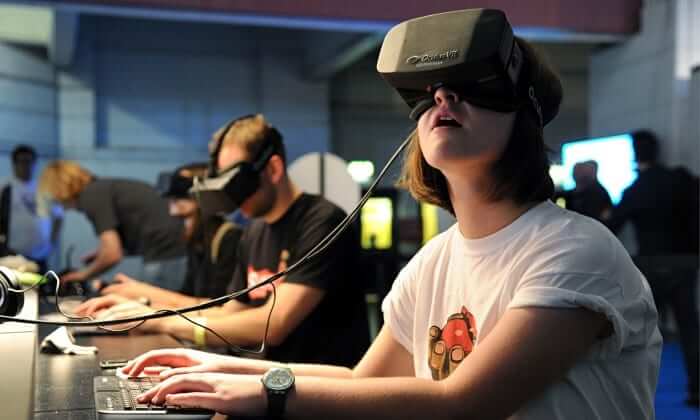Technology-enabled personalized learning systems continue to capture the imaginations of educators, and for good reason. The promise of tailored learning for every student, providing them just what they need when they need it to master a concept at just the right pace and with just the right kind of help to do so all at a massive scale is tantalizing.
Personalized learning refers to instruction in which the pace of learning and the instructional approach are optimized for the needs of each learner. Learning objectives, instructional approaches, and instructional content (and its sequencing) may all vary based on learner needs. In addition, learning activities are made available that are meaningful and relevant to learners, driven by their interests and often self-initiated. (NETP 2016)
But realizing this vision is incredibly complicated. There are so many variables to measure and control for, so many inferences to judge and decision points to set, that the prospect becomes immediately overwhelming. The natural instinct of many designers of these systems has been to reduce the variables as much as possible, thus exerting greater control over the environment and the learner, with the hope of increasing the reliability of outcomes.
Design Continuum: Closed vs Open
In doing so, designers move to one end of a design continuum. That continuum runs from closed and controlled on the one hand vs open and context aware on the other. The closed, controlled approach reminds me of a virtual reality headset. It encloses the learner in the system, isolating them, and attempts to provide for their every need, without referencing a larger context. It reserves most of the control of the system for itself.
In contrast, I think of an open, context aware approach as an augmented reality (AR) display found on modern fighter jets and more and more in the automotive industry. This approach overlays critical digital information on top of the outside world by projecting it onto the cockpit window or the windshield of a car. It provides the pilot or driver constant information synchronized with the changing external conditions. More recently, AR is showing up in the entertainment industry and even in classrooms. It situates and supports the user in a broader context with the goal to prompt and interpret, but not to control the learner.
Closed Personalized Learning Systems
The closed approach to design characterizes the vast majority of the first wave of personalized learning systems in schools and most of the intelligent tutoring systems that preceded them. As a result, most personalized learning systems tend to:
- Be stand alone solutions
- Focus on a single subject area
- Run independently of other data systems
- Run independently of the teacher’s input and control
- Limit the learners agency in decision making about their learning
They are algorithm centric; that is, they assume the algorithm is going to teach the student in the best and fastest way possible. If based on sound research from the learning sciences, it may very well be that the algorithm will outperform more naive approaches. But systems architected in this manner may also have significant disadvantages:
- They tend to isolate the student from peers and teachers
- They tend to bog down when a student is not just a little bit off, but a lot off (when Hint #3 and Alternative Explanation #5 still doesn’t do the trick)
- They provide a siloed dataset that relates only to itself and which tends to be reported only within the system
- They don’t benefit from knowledge that teachers have about students from other contexts or from insight that students might have about themselves
- They are generally unaware of learning experiences outside of the system that might have changed the mastery level and/or learning needs of students
- They are entirely dependent upon the itemset within the system to build their adaptations.
Like virtual reality headsets, they create a learning context around the student and immerse them in it. This provides tremendous control to the system designer to eliminate distractions, which can be beneficial to learners who might otherwise become overwhelmed. But it also blocks out other, potentially helpful, sources of input.
Context Aware Personalized Learning Systems
Personalized learning systems could be more powerful, more useful, more relevant, and more accurate if they reoriented from being algorithm centric to being context aware. This approach still runs on algorithms, of course, but, unlike a closed system, a context-aware system is open to other sources of external input that may be able to provide crucial information. These systems tend to leave a significant degree of decision-making up to the user of the system.
Context aware personalized learning systems would have the following characteristics:
1. Be aware of other points of input and use them to inform its algorithm.
a. They would gather information from external assessments; from other learning systems; from teachers, coaches, mentors, and peers; and from available background information on student’s strengths and needs. They would be hungry for data from outside sources and would use this to troubleshoot and adjust their own assertions and predictions about the learner.
2. Be aware of other points of output and allow data to flow out in machine readable formats.
a. They would feed their output data into broader teacher dashboards and enable a view of the whole student by seamlessly contributing their data as one piece of a larger puzzle. They would provide data about learners in formats useful to researchers, administrators, and school counselors, all according to laws and best practices around privacy and security.
3. Be aware of teaching and learning that happens outside of the system.
a. They would include a mechanism to allow a teacher (or the learners themselves) to input that the learner had practiced or mastered material externally to the system. Of course, the system could still provide a brief quiz, test, or activity to verify the accuracy of the report.b. They would include mechanisms that would also allow a teacher to report potential regression, perhaps after a long absence or summer break. The system would then be alerted to follow up to verify that previously mastered concepts were still intact and remediate as needed.c. More advanced systems could also enable and track learning outside of the system and account for it within the system. For example, they could suggest activities outside of the system that the student is either ready for or that the student needs extra help with. After the external activity takes place, they incorporate the results, verifying mastery as needed.
4. Be aware of and responsive to input from external experts, such as teachers and researchers.
a. They would recognize external learning experts and be appropriately responsive to their input. For example, the system might make broader adjustments to its algorithms, increasing or decreasing difficulty levels based on expert input. Of course, the system could still verify this input with additional measurement and could present any discrepancies between the expert’s assessment and the systems assessment back to the expert for consideration.
5. Be aware of and responsive to input from the student.
a. While learners can be unreliable sources of information about their own mastery, systems that collect feedback from them could benefit from understanding their perceived efficacy, progress, and emotional state, all of which impacts learning and performance. Students could share when they were feeling like the system was going too fast or too slow or to cry “Help!” when they were stuck somewhere and the system was not recognizing their distress. Students could also indicate their level of effort or confidence in their responses. This feedback could be used to adjust to their frame of mind and also could be used to improve the system.b. They would allow the learner to have meaningful agency in their learning. This approach would allow the user to make substantial choices (not just choosing whether to do addition first or subtraction first) that allow them to tailor content to their interests and needs. This approach would work to maximize student choice while still providing sophisticated customization of learning.
Of course, these systems also have drawbacks. As alluded to above, student (and teacher) input can be subjective, incomplete, or just plain wrong. That is why systems designed in this way also need safeguards built in to validate the information coming from external sources.
First Steps
A context aware personalized learning system will require significant change. It will certainly require a paradigm shift among many who design these systems. It will require robust and meaningful data interoperability standards among personalized learning systems at a level of granularity that does not presently exist. It also will require a great deal of new engineering and functionality. It is hard to imagine these kinds of systems being fully functional anytime soon. However, we can start now by creating a foundation for this functionality in our current systems by:
- Complying with interoperable data standards
- Creating APIs for both receiving and sharing data with other systems
- Designing systems capable of processing learning data from external activities and assessments
- Designing algorithms to evaluate external inputs and adapt accordingly
- Maximizing and prioritizing features that support learning agency
In short, this approach would open up closed systems to make them responsive to other systems and responsive to teachers, learners, and others outside of the system and what they might do to impact learning. More sophisticated implementations would become a partner with the those outside the system in adjusting the algorithms inside the system while also verifying that the changes are justified.
A Crossroads: Virtual Reality or Augmented Reality
We are at a crossroads in our design approach to personalized learning. We can keep burrowing in, creating an ever narrower and more controlled environment, like a VR world that grows ever more elaborate and detailed, yet exists for and isolates a single person inside an enclosed headset. Or we can turn outward to create context aware systems that function like augmented reality displays that sense, interpret, and add value to the wider world of learning, leaving as much agency in the hands of the learner as possible. The path to context aware systems is longer and more difficult, but ultimately may lead to more meaningful learning and engagement that, in my view, is worth the effort.
_________________________________________
About the Author
This article was written by Joseph South is Director of the Office of Educational Technology at the U.S. Department of Education.





























